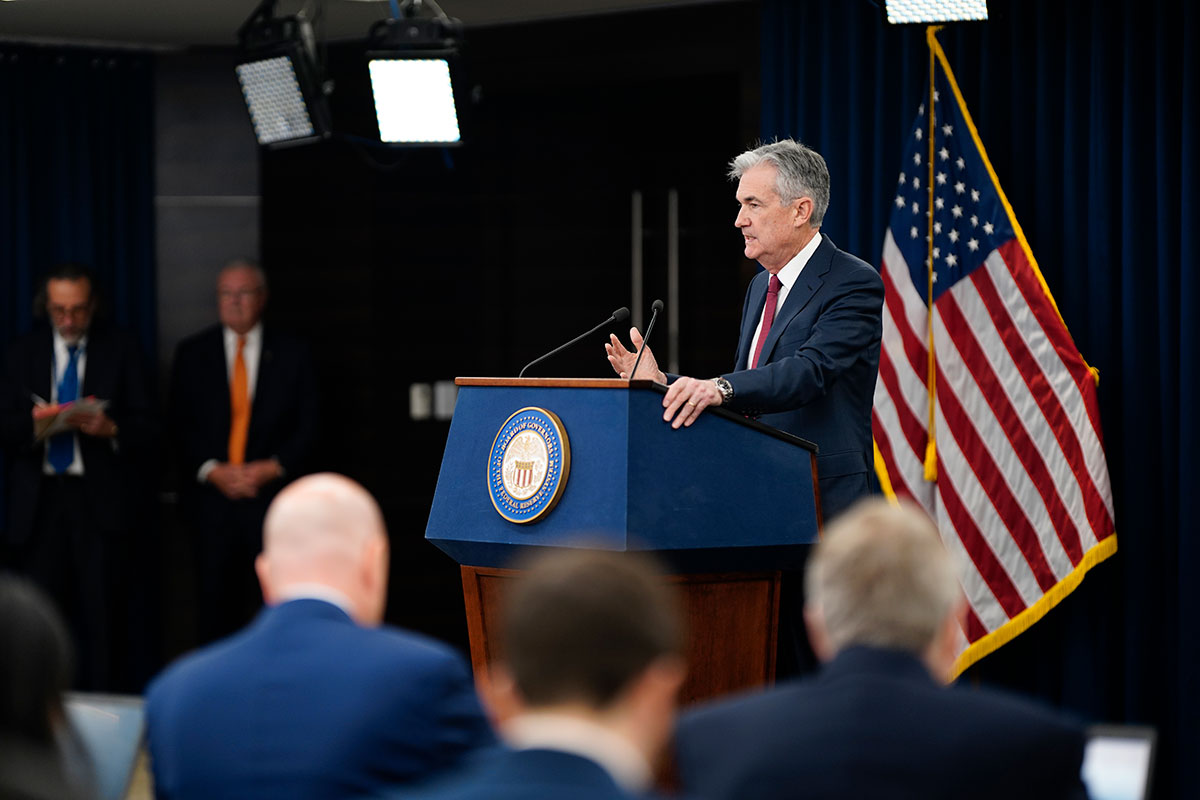The Wall Street Journal (WSJ) on Wednesday reported that the Donald Trump administration plans to name its nominee to succeed Jerome Powell as the Federal Reserve chairman by September or October, citing people familiar with the matter.
This plan is a continuation of the so-called “Shadow Fed Chair”. The idea is that the Trump administration would make public its replacement of Chair Powell early. Then, this designated future Fed chair could openly communicate his monetary policy plan even before taking office. By acting as a “backseat driver” of the Fed, they could influence investors’ expectations and pressure the FOMC to follow their policy directions much earlier.
The plan may sound powerful on paper, but it remains to be seen what the Shadow Chair can to compel members of the FOMC to follow his idea. If it’s verbal persuasion or even attacks, President Trump is himself the master of such art, and he is doing a lot of that already. It’s hard to imagine how anyone could be more “effective” than the President Trump in this regard.
A potential Shadow Chair timeline
Another question is, why a Sept/Oct nomination? A potential play here is the chair-in-waiting will actually first get a Fed board seat in January by replacing Adriana Kugler, whose term ends at the end of that month. A three-month nomination process seems reasonable. For example, Kugler herself was nominated May 2023 and sworn in in Sept 2023, which is a four-month process when the Republican holds a majority in the House.
Putting the Shadow Chair inside the seven-member board first and letting him go through the chairman nomination process on the job makes sense. It would give him a vote on monetary policy in every meeting and influence over other governors and regional Fed presidents during the four-month waiting period. This enables the potential to form a team with other right-leaning Fed officials to pressure FOMC to move in a direction more friendly to Trump’s agenda and more directly criticize Powell.
It seems likely such an idea is already on Trump’s mind, as he recently wrote on Truth Social: “THE BOARD SHOULD ACTIVATE. MAKE AMERICA GREAT AGAIN!” Putting a shadow chair inside the Fed could definitely “activate” the Fed.
The process can be done even more smoothly if Trump’s choice of shadow chair is an existing governor. Potentially, Chris Waller, a rumored candidate under Trump’s consideration who recently started to advocate a rate cut in the July meeting, can do that. If he is nominated as the next Fed chair by September, this would give him eight months to “backseat-drive” the Fed’s policy with a vote.
Powell has the option to ‘Reverse Shadow Chair’ his successor
There is a possible scenario that in the next eleven months the Trump administration and its shadow Fed chair do something considered as “over the line” that endanger central bank independence’. In such a case, Powell actually has an option to counter, a move I call the “Reverse Shadow Fed Chair”: stay at the Fed as governor even after his Chairman term ended.
Powell first took his governor seat on May 25, 2012 and that was an remaining unexpired term left by Frederic Mishkin, who resigned as governor at the end of August 2008. Powell’s was then reappointed to a full 14-year governor term in June 2014. That term ends on January 31, 2028.
An important point to keep in mind is that while most Fed chairs leave the board when their chairmanship ends, it is not a legal requirement; it’s more a tradition and courtesy act. Powell has the right to remain as a governor until Jan 2028, which is 18 months after his chairman term ends.
Given that Powell is seemingly well-respected by existing members of both the Fed board and regional Fed, if the upcoming chair is considered as “hostile” to central bank independence by other Fed officials, it won’t be entirely unthinkable that those Fed officials, especially regional Feds presidents who are currently closely aligned with Powell on the “wait-and-see” approach, will potentially side with the “Reverse Shadow Fed Chair” topush against any move to align the Fed with a political agenda.
If one thinks an eight-month “Shadow Fed Chair-ing” is powerful, be wary for a 18-month “Reverse Shadow Fed Chair-ing” that can last until the final year of Trump era.
Of course, it can be argued that investors are forward looking and it’s the power to shape future monetary policy that matters. A “Reverse Shadow Fed Chair” has very limited influence on this front. Yet, given the respect Powell earned among the central banking community through the Covid era, he could be the most powerful backseat driver of monetary policy we would ever see.
Can Powell really stay on as governor?
This actually had happened before. Marriner S. Eccles, who was hailed as “the Father of Modern Fed” remained on the Board of Governors for three more years after his chairmanship ended at 1948.
That experience, however, was a bit different from current situation. Despite the fact that there was a political fight with between President Truman and the Fed at the time, which led to Fed-Treasury Accord of 1951, recent research by Gary Richardson of University of California, Irvine and Peterson Institute’s David Wilcox, showed Truman asked Eccles to remain as vice chair when the president picked a new chair. It was Eccles who decided to only remain as governor. Still, the Eccles episode illustrated that it is well within Fed chairs’ rights to retain their governor seats.
Importantly, a recent Supreme Court ruling on the President’s rights to fire board members of independent government agencies without cause especially mentioned that the Fed “is a uniquely structured, quasi-private entity that follows in the distinct historical tradition of the First and Second Banks of the United States,” implying that the central bank’s officials should have special protection from the President and likely should not be removed without cause. Hence, it is more than likely that if Powell decides to stay after his chairmanship ends, the President cannot fire him.
Another relevant example to consider is current Fed board member Michael Barr’s decision to give up his Vice Chair for Supervision position earlier this year. Barr’s decision to give up his vice chairmanship but retain a board seat can be considered a “clever” move in the sense that he can avoid any ugly disputes with the Trump administration over bank regulations and at the same time avoided vacating a governor seat prematurely for the President to fill.
This decision showed that incumbent Fed members have concerns about conceding any seats to President Trump unnecessarily; retaining their board seats is a critical tool to maintain stability in the central bank amid constant “attacks” by the President. I am sure Powell is aware of all these, as he has a front-row seat of the Barr episode.
Will he though?
However, this is obviously a nuclear option. A former chair staying on as governor is “unusual’ enough under normal circumstances; it would definitely be considered as “confrontational” if it is done in under Trump presidency.
A Fed Civil War would definitely be harmful to the central bank’s credibility. And if Trump seeks to remove Powell from office without cause, even as a governor, it will be a very ugly legal fight, as the SCOTUS opinion on Fed protection seems to apply not only to Fed chair, but the whole Fed board and FOMC. Such legal fight would likely test market’s faith in the Fed as well as the USD.
Would Powell want that? The answer is likely no; but it could also be, “it depends”. Ultimately, Powell’s decision could hinge on whether he sees a greater risk in a confrontational battle for the Fed’s independence or in silently allowing it to be reshaped by political pressures.










